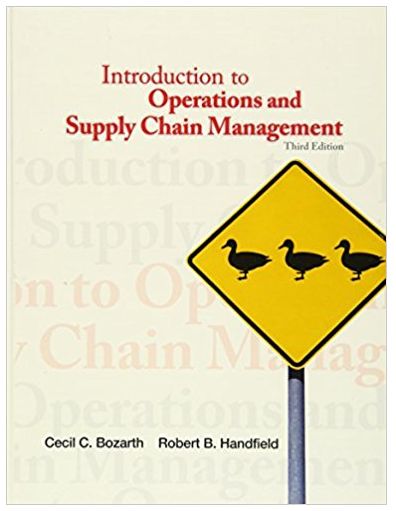Question
CASE STUDY: How Globalization in Food Supply Chain affects safety Every day brings a new report concerning a food product recall. Has the media simply
CASE STUDY:
How Globalization in Food Supply Chain affects safety Every day brings a new report concerning a food product recall. Has the media simply become more receptive to food safety issues and has been addressing them with more scrutiny? The brief answer is that globalization has generated gaps in security in the food supply chain. As a result recalls are rising. However, food production, packaging, warehousing, shipping and supply chain technology has all evolved to seal these gaps. It is not just the ingredients that are globalized the processing equipment, chemicals for cleaning and even the packaging is globalized. Food supply and consumption across the globe is becoming more interconnected and, simultaneously, so is human and farm animal health. Demographic Shift Creates Vulnerabilities The World Economic Forum's 2016 Global Risks Report declared that demographic change is also exposing more sensitive consumer groups to the hazards of contaminated food. Aging societies, an increase in allergies and malnourishment are all factors that raise the susceptibility to food safety risk. It has taken the supply chain a lot of time to recognize all of its vulnerabilities and to get up to date on the tools being proposed. Monitoring and tracing inputs and outputs throughout an intricate supply chain and beyond multiple borders is tedious. This has resulted in elevated risk vulnerability and latent liability for food manufacturers. Advantages and Consequences of Globalization The worldwide commerce in food benefits the consumers through lower prices, a greater variety of foods, greater quality, limited dependence on seasons and supplies accessible all year round. It has been facilitated by advancements in shipping, food packaging and refrigeration. Besides evolved technologies in communication, farming and weighing systems, practices and the liberalization of global trade have also helped considerably. Nevertheless, the rising number of stages and elements in the food system incorporating production, processing and distribution throughout the vast complex channels increases the possibility of food-borne diseases and other jeopardies. Thus extending the spectrum of food-borne diseases that can be injected into the systems. It also increases the health and economic repercussions of a single contamination incident. This incident in turn is most likely to affect many more processors, suppliers and consumers beyond multiple borders. Surmounting the Challenges The complexity of the food supply chain has unleashed traceability tools that allow food industry operations to prevent recalls and, when needed, answer them effectively. Safety Specialists Play a Key Role Increasingly, food companies are turning to third-party safety experts to enhance safety. Many sustainable food industries are updating their safety audits by outsourcing the task to third party safety specialists. The audit also handles compliance with the various local safety regulations which the food businesses must meet. Voluntary food safety audits should be done The necessity to regulate safety in the supply chain has fed the growth of voluntary food safety certification systems. Retailers and manufacturers sometimes have their own safety certification criteria for third-party warehouses. However, food retailers and manufacturers are increasingly welcoming the safety certification programs managed by third-party audit organizations. Safety standards should be implemented For distribution centers, audits concentrate heavily on temperature reporting in cold storage sections. Added focal areas contain product rotation, employee hygiene, protection from temperature abuse and sanitation during transportation. Supply chain providers are also seeking better tools in the market for their in-house safety testing. Controlling access Sustainable food industry operations use an electromechanical system that implements an integrated access control, monitoring and sensor/alarm platform. This protects freight integrity by controlling lock and latch status updates and implementing enter/exit alerts. Although electronic access control is common for security, trailer and container, access controls are traditionally mechanical. They are the only systems requiring manual recording and reporting of events. Ensuring food safety has become increasingly challenging due to globalization. As a consequence, developing effective food safety parameters is fast becoming a priority for the international community.
Question 3 (20 Marks)
Suppose you are a supply chain specialist of a food company operating in different countries around the world. Critically examine the factors leading to demand variability and the bullwhip effect in your organization's supply Chain. Make use of the relevant examples to illustrate your answers.
Step by Step Solution
There are 3 Steps involved in it
Step: 1

Get Instant Access to Expert-Tailored Solutions
See step-by-step solutions with expert insights and AI powered tools for academic success
Step: 2

Step: 3

Ace Your Homework with AI
Get the answers you need in no time with our AI-driven, step-by-step assistance
Get Started


